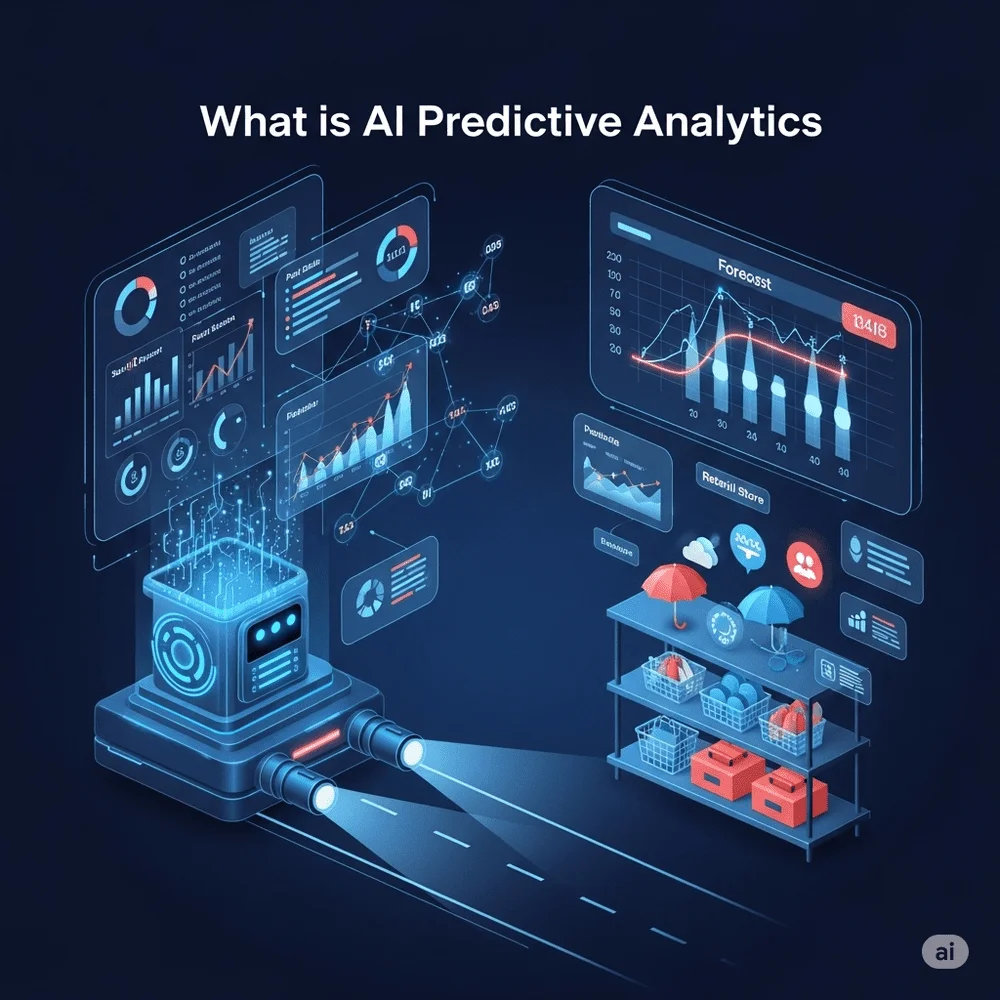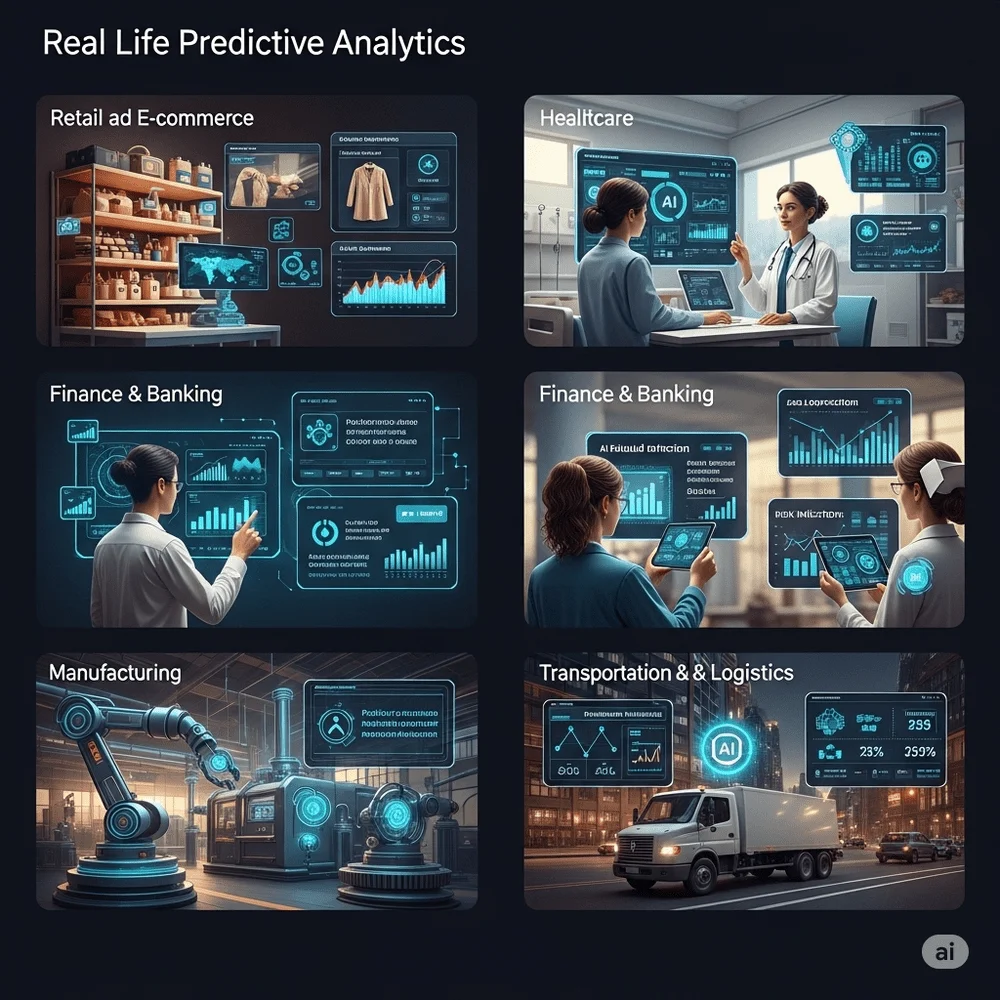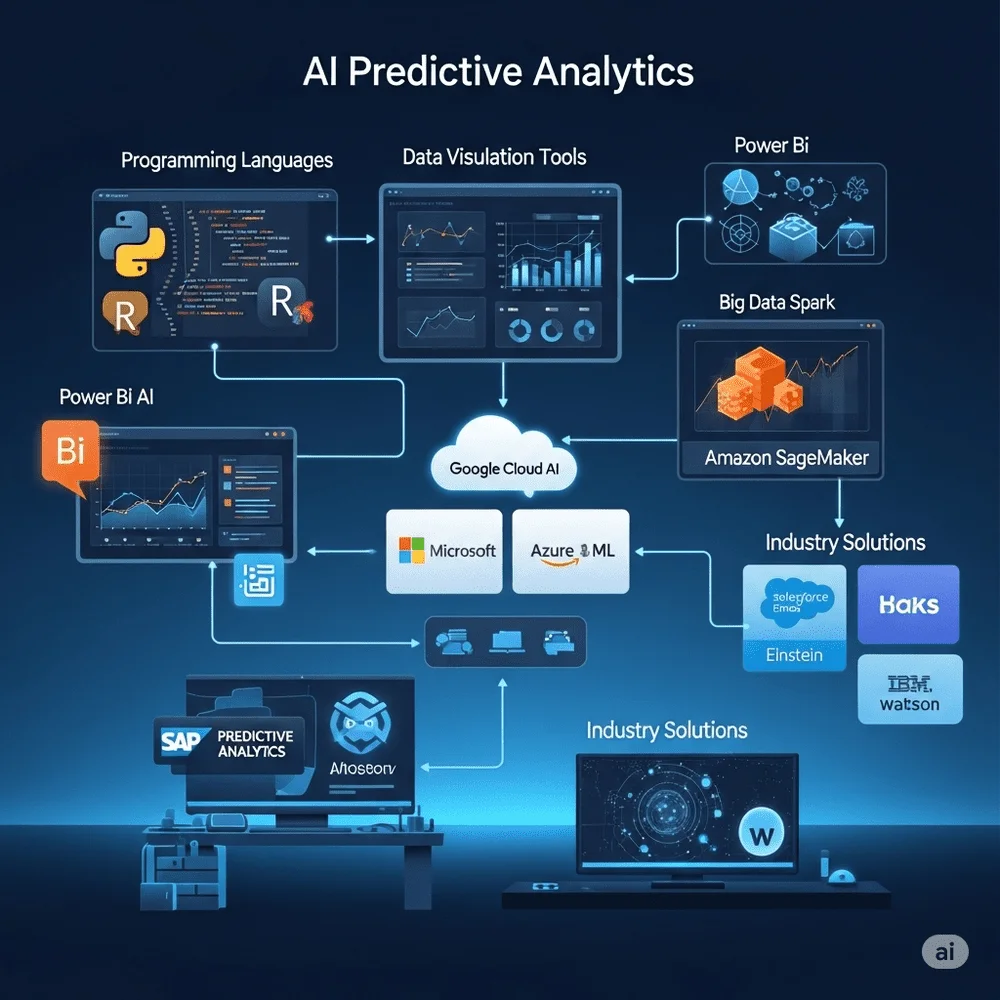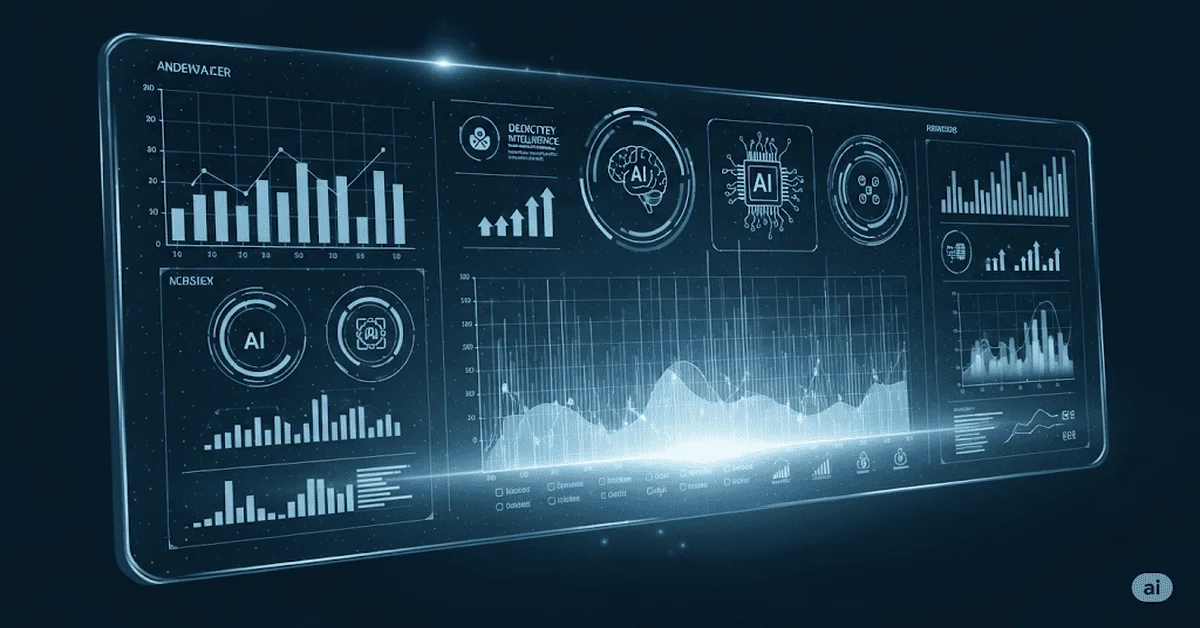In today’s digital age, making smart, data-driven choices is crucial. AI predictive analytics empowers businesses of every size to Boost Decisions with AI by interpreting historical data and anticipating future trends. This technology reduces risks, reveals opportunities, and improves planning across industries.
What is AI Predictive Analytics?
AI predictive analytics is a method that uses machine learning algorithms, past data, and pattern recognition to forecast future events or behaviors. It’s not just about collecting numbers, it’s about teaching machines to understand the story behind the data and then predict what might happen next.
Example
If a retail store sees that umbrellas sell more during the monsoon season, AI can take this basic insight and refine it with more complex data like local weather, past sales, online trends, and customer preferences. The result? Highly accurate predictions that guide smarter stocking, pricing, and promotions.
In simple terms, it’s like turning on headlights while driving at night. You’re not guessing you’re seeing what’s coming ahead, so you can act wisely.
How Does AI Predictive Analytics Work?
It might sound complex, but the process behind AI predictive analytics can be broken down into clear steps:
- Data Collection: Gather data from multiple sources like websites, apps, social media, customer records, sales data, and even weather reports.
- Data Cleaning: Remove errors, duplicates, or missing values to make sure the data is usable.
- Model Building: Use machine learning algorithms like regression, decision trees, or neural networks to identify patterns in the data.
- Prediction: Use the trained algorithm to analyze current inputs and forecast probable future outcomes.
- Decision-Making: Use the insights to take action, adjust your inventory, create targeted campaigns, or prevent future problems.
These steps happen rapidly using AI tools that analyze millions of data points in seconds, delivering insights that would take humans days or weeks to uncover.
Real-Life Applications of AI Predictive Analytics
Businesses now Boost Decisions with AI by using predictive analytics to forecast trends, detect risks, and make smarter, faster choices across all industries.
1. Retail and E-commerce
- Track shopping behavior and suggest related products
- Forecast seasonal demand and adjust stock levels
- Launch personalized promotions to increase conversions
Example: If AI notices a spike in coat sales every October, retailers can plan and stock up early, boosting profits and customer satisfaction.
2. Healthcare
- Predict which patients may develop chronic conditions
- Optimize staff scheduling and reduce emergency visits
- Identify risks early to improve patient outcomes
Example: Hospitals use AI to detect early signs of health issues, allowing for faster treatment and fewer emergencies.
3. Finance and Banking
- Detect suspicious transactions to prevent fraud
- Predict customer churn and offer personalized solutions
- Assess loan applications based on risk profiles
Example: A bank may get alerts if a customer shows signs of closing an account soon, allowing staff to step in and resolve issues.
4. Manufacturing
- Forecast equipment failures before they happen
- Optimize maintenance schedules to avoid downtime
- Improve production efficiency by predicting demand
Example: A factory uses AI to track machine data and schedule timely repairs, preventing costly breakdowns.
5. Transportation and Logistics
- Predict delays caused by weather or traffic
- Plan the most efficient delivery routes
- Reduce fuel use and improve delivery accuracy
Example: Delivery companies use AI to adapt routes in real time based on traffic, saving both time and money.
Key Benefits of Using AI Predictive Analytics
The real power of predictive analytics lies in the value it brings to decision-making. Here’s what it offers:
- Better Decisions: Data-backed insights replace guesswork and gut feelings.
- Faster Responses: AI processes data instantly, allowing real-time action.
- Cost Savings: Avoid overproduction, reduce waste, and manage risks.
- Increased Revenue: Spot new opportunities and trends before competitors.
- Customer Satisfaction: Anticipate customer needs and personalize their experience.
- Risk Management: Identify problems before they occur and prevent losses.
Whether you’re in business, healthcare, or logistics, these benefits lead to higher performance and lower risk.
Tools and Technologies Behind Predictive Analytics
AI tools like Power BI, Tableau, Python, and cloud services simplify data analysis, helping businesses Boost Decisions with AI quickly and easily.
- Programming Languages: Python, R
- Visualization Tools: Power BI, Tableau
- Big Data Platforms: Hadoop, Apache Spark
- Cloud Services: Google Cloud AI, Microsoft Azure ML, Amazon SageMaker
- Industry Tools: Solutions like Salesforce Einstein, SAP Predictive Analytics, and IBM Watson offer tailored AI insights for diverse business needs.

Many of these platforms come with built-in dashboards and drag-and-drop features, so even non-technical users can generate insights.
How Small Businesses Can Use AI Predictive Analytics?
Small businesses can Boost Decisions with AI by using affordable tools like Google Analytics and Mailchimp to improve marketing, sales, and forecasting, starting with small leads to steady, smart growth.
- Use Google Analytics to understand website visitor behavior
- Mailchimp can automatically identify the optimal time to send emails, increasing open rates and improving campaign results.
- Choose inventory software that forecasts which products will sell the most
- Analyze POS (Point-of-Sale) data to manage stock levels better
Start small, pick one goal like improving email engagement or predicting best-selling products, and grow from there. Consistently applying these small strategies can lead to significant long-term improvements.
How to Get Started?
If you’re ready to bring predictive analytics into your workflow, follow these steps:
- Set a Clear Goal: Know what you want to predict sales, customer churn, demand, etc.
- Collect Quality Data: Make sure your data is clean, organized, and relevant.
- Choose the Right Tool: Select a platform that fits your technical skills and budget.
- Build a Model: Use historical data to train your AI system.
- Analyze and Apply: Use the predictions to inform real business decisions.
- Refine Over Time: Update your model with fresh data regularly to enhance its accuracy and reliability.
You can also hire a freelance data expert or partner with an analytics service if needed.
Common Challenges and How to Overcome Them
Even though AI predictive analytics is powerful, it’s important to be aware of its limitations:
- Bad Data = Bad Predictions: Always prioritize clean, complete data
- Privacy Regulations: Ensure user data protection by adhering to standards such as GDPR and other applicable regulations.
- Cost and Complexity: Start with affordable, beginner-friendly tools
- Resistance to Change: Train teams and explain the benefits clearly

Most of these issues can be solved with proper planning, training, and support.
The Future of AI Predictive Analytics
As more businesses collect data and AI tools become easier to use, predictive analytics will become a daily part of decision-making. Expect to see:
- Real-time predictions during customer interactions
- Voice-based AI assistants guiding business strategy
- Industry-specific tools for every size of business
- Hyper-personalized experiences for users across platforms
Businesses that adopt predictive analytics early will stay ahead of the curve, while those that delay may fall behind.
Final Thoughts
Using AI predictive analytics is like giving your business a sixth sense. It helps you see what’s coming, prepare ahead, and make smart, confident decisions. No matter the size of your company or industry, this powerful tool is now within reach.
Start small, keep learning, and let the data show you the way forward. When decisions are powered by AI, they’re not just smarter, they’re future-ready.



